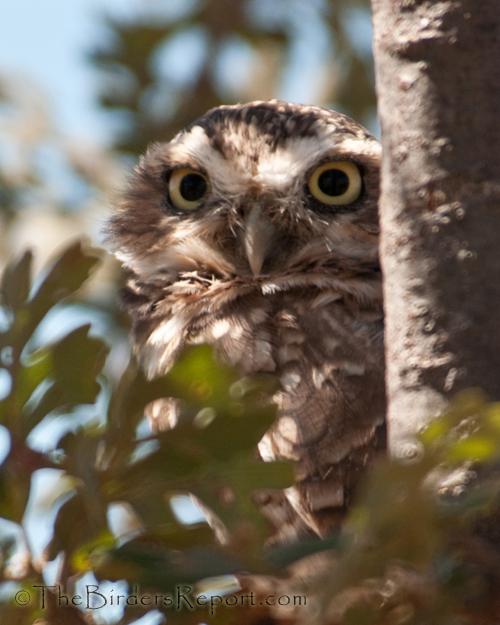 Burrowing Owl In An Oak Tree all photos by Larry Jordan
Burrowing Owl In An Oak Tree all photos by Larry Jordan
The Burrowing Owl (Athene cunicularia) is a species of special concern in California and several other states. They are declining across much of California in response to loss of habitat to urban development, ground squirrel control efforts, and intensive agricultural practices.
Burrowing Owls are active both day and night and usually nest in colonies made up of several underground burrows. In the midwest these small owls are known to use prairie dog burrows but here in California they are more likely to share their habitat with ground squirrels.
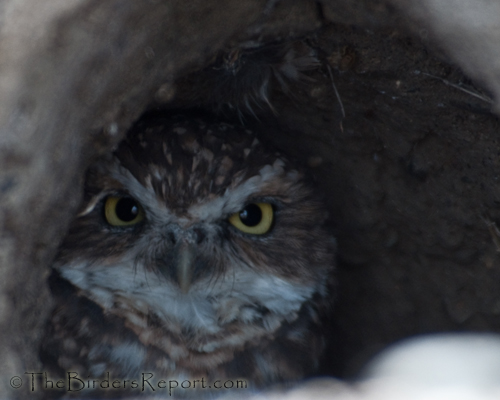 Burrowing Owl In A Natural Burrow
Burrowing Owl In A Natural Burrow
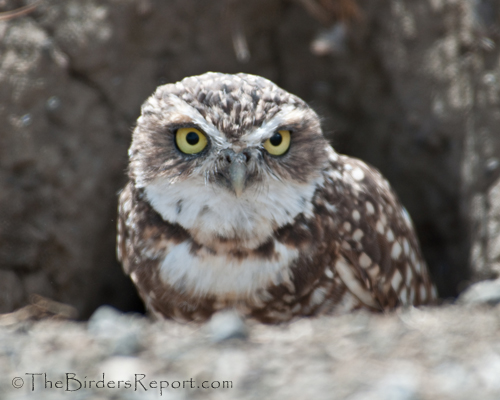
Burrowing Owls prefer dry, open, short-grass plains where they can find burrows in which to nest and escape predators. They can also be found near cemeteries, vacant lots and golf courses. These beauties live right next to a golf course near Davis, California, where they have adapted to a high traffic area of golf carts and joggers.
Owls in agricultural environments nest along roadsides and water conveyance structures such as open canals, ditches, and drains that are surrounded by crops. For this reason the Burrowing Owl population has been increasing in the California Imperial Valley coinciding with the increase in agricultural expansion in that area. Below is a range map courtesy of Cornell Lab.
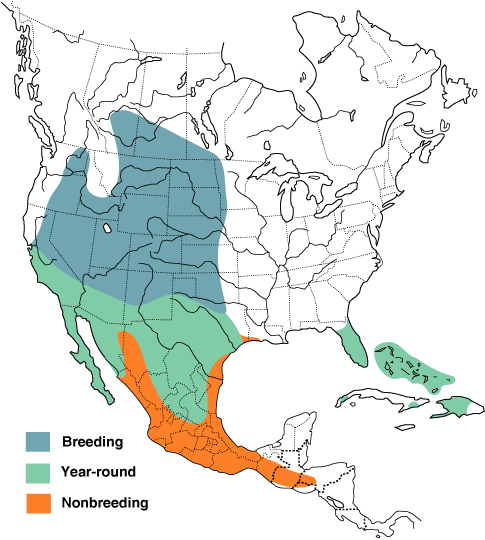
Burrowing Owls are opportunistic feeders, they eat primarily arthropods, small mammals, and birds, taking insects during the day and small mammals mostly at night. Crickets, earwigs and meadow voles are the most frequently found items in Burrowing Owl pellets here in California.
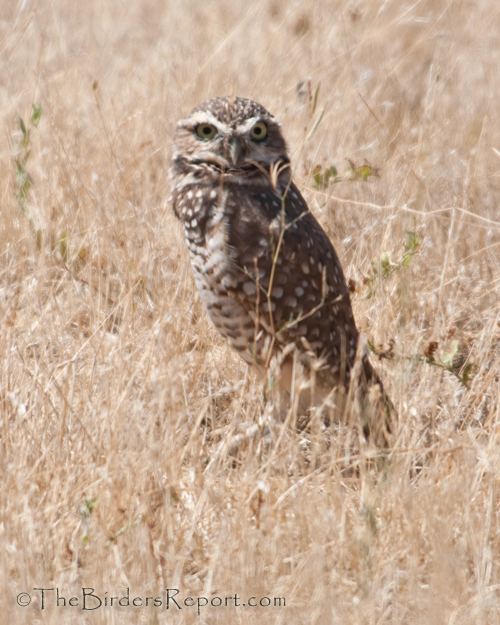
Burrowing Owls not only nest in burrows dug by ground squirrels, prairie dogs, skunks, badgers, armadillos and other ground dwelling mammals, they will also use artificial burrows created by humans. There is an artificial burrow site here in Davis but I found that many of the owls here occupied the natural burrows made by the ground squirrels.
When disturbed, owls will fly from one burrow opening to another to escape whatever they consider a threat. This is one reason Burrowing Owls prefer nesting sites with a high density of burrows available. The burrows are used for escaping predators as well as nesting during breeding season. I captured a decent photo of this owl as it flew from one burrow opening to another.
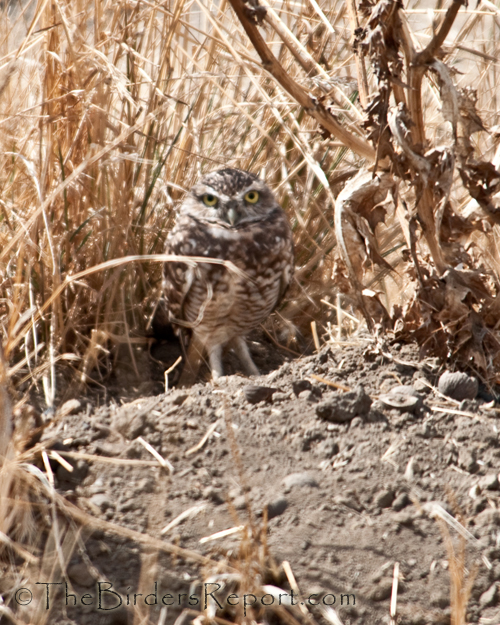
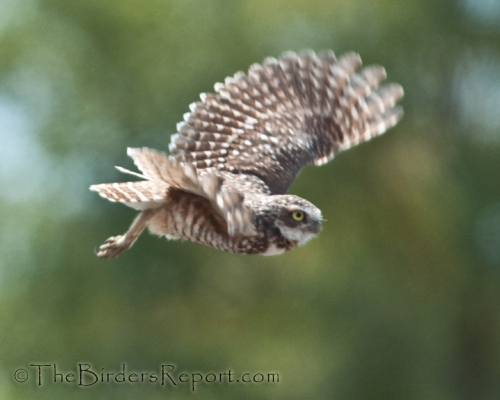
I will be talking more about Burrowing Owl habitat and artificial burrows in a following post as I have applied for a grant from California Audubon for a Burrowing Owl project here in Shasta County. I want to give this beneficial owl species new homes to replace lost habitat in my county. Wish me luck!
There is a meeting of the Burrowing Owl Consortium coming up on September 17th in Mountainview, California. If you are interested, click on this link. Sorry about the late information on this but if you contact Catherine Portman you may still get a seat. Of course you also want to see the other great bird photos over at Bird Photography Weekly.
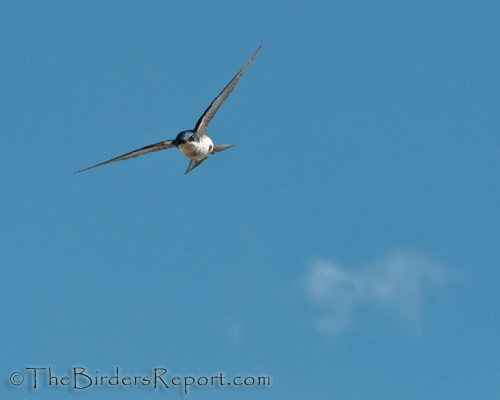 Tree Swallow In A Dive Bombing Run photo by Larry Jordan
Tree Swallow In A Dive Bombing Run photo by Larry Jordan







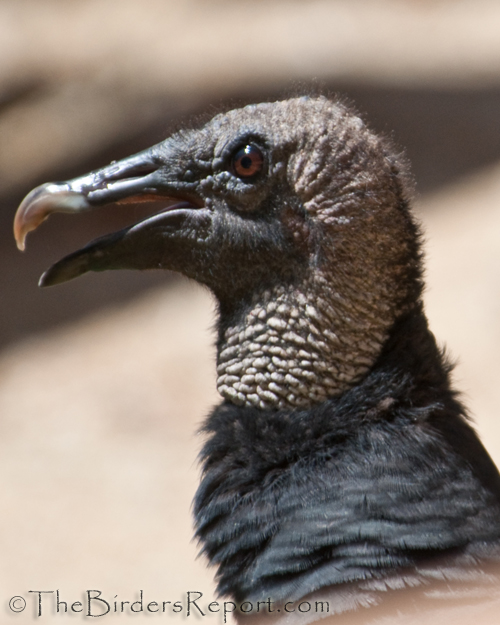
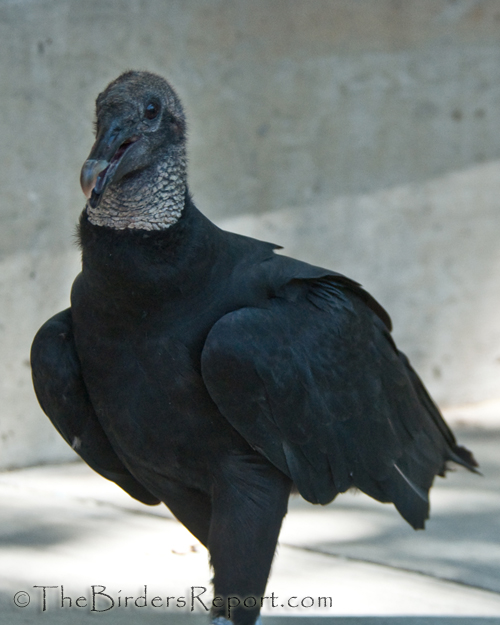
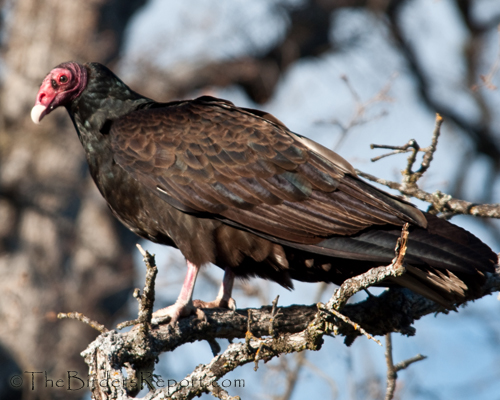 Turkey Vulture photos by Larry Jordan
Turkey Vulture photos by Larry Jordan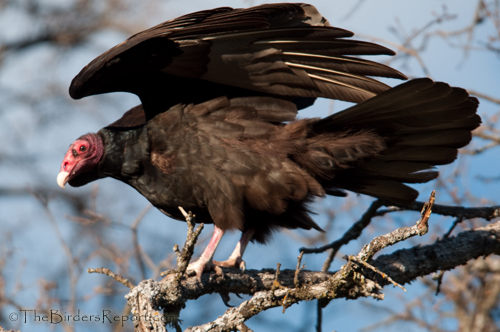
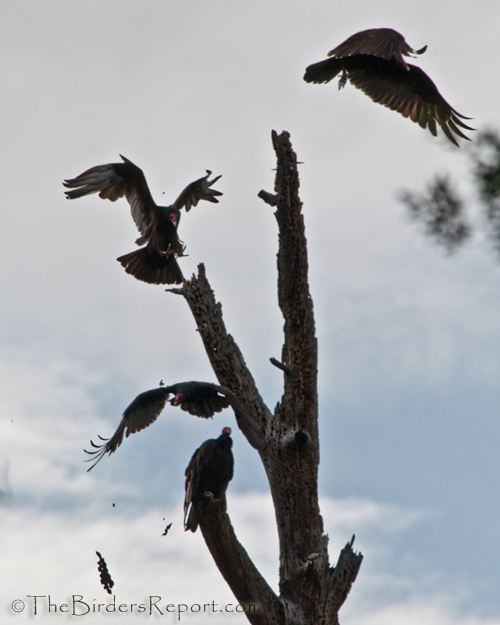
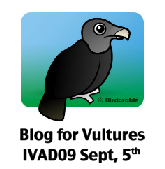
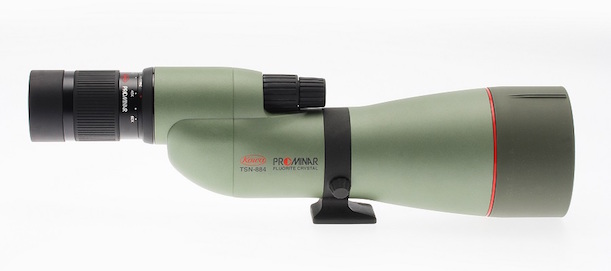


Social Media Connect